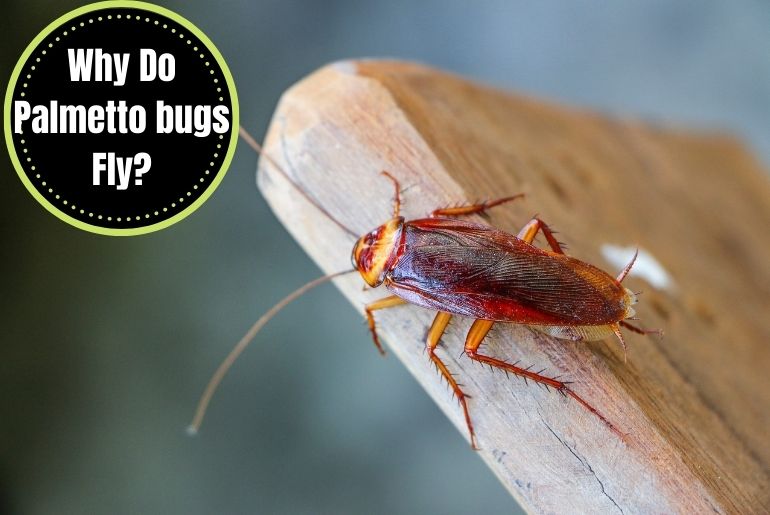Palmetto bugs are capable of flying, although they primarily rely on their legs to move around. They have fully developed wings that extend beyond their body length and enable them to fly for short distances. Palmetto bugs typically use their wings to escape danger or to find food or mates. However, they are not strong fliers and can only sustain flight for a few seconds at a time. Despite their ability to fly, palmetto bugs are primarily known for their quick and agile movements on the ground, which make them adept at evading predators and humans alike.
Why Do Palmetto bugs Fly?

Palmetto bugs have wings that enable them to fly for short distances. They use flight primarily as a means of escape from danger. When threatened by a predator or disturbed by a human, palmetto bugs may take to the air to quickly get away from the perceived threat. They may use flight to find food or mates. They are attracted to light sources and may fly towards them to locate potential sources of food. In terms of mating, males may fly to locate females, which emit pheromones to attract mates. While flight is not a primary means of locomotion for palmetto bugs, it is an important adaptation that allows them to survive in their environment.
How Palmetto bugs Fly?
Palmetto bugs have fully developed wings that enable them to fly for short distances. The wings are located on the thorax, which is the middle section of their body, and they extend beyond their body length. To fly, palmetto bugs move their wings rapidly back and forth, creating a lift force that allows them to take off and glide for short distances.
How Far Can Palmetto Bugs Fly?
Palmetto bugs are capable of flying, but they are not strong fliers and can only sustain flight for short distances. Typically, they fly for only a few seconds at a time, just enough to escape from danger or find food or mates. The maximum distance that palmetto bugs can fly is not well documented, but it is generally believed to be only a few meters. They are not known to migrate long distances or fly for extended periods, as their wings are not designed for sustained flight. Instead, palmetto bugs primarily rely on their legs to move around and their wings as a means of escape or to locate resources in their immediate environment.
Do Baby Palmetto Bugs Fly?
Baby palmetto bugs do not have fully developed wings and are not capable of flight. Like adult palmetto bugs, nymphs have wing pads on their thorax, but these are not functional until the insects reach adulthood. Instead of flying, nymphs move around by crawling and using their legs to walk and run. As they grow and molt, their wings develop and become fully functional in the adult stage. Once they reach adulthood, palmetto bugs may use flight as a means of escape or to locate resources, but not before then.
How to Get Rid of Palmetto Bugs at Home?
Identify and eliminate entry points
Seal cracks and gaps in windows, doors, and walls to prevent palmetto bugs from entering your home.
Remove food sources
Keep food in sealed containers and clean up spills and crumbs immediately. Don’t leave pet food out overnight.
Reduce moisture
Fix leaky pipes and faucets and use a dehumidifier to reduce moisture levels in your home. Palmetto bugs thrive in humid environments.
Use bait traps
Place bait traps in areas where you have seen palmetto bugs. The traps contain a poison that the bugs eat and take back to their nest, killing off the entire colony.
Use insecticide
Spray insecticide in areas where you have seen palmetto bugs, such as in cracks and crevices, behind appliances, and in cabinets. Be sure to follow the instructions carefully and use caution around pets and children.
Hire a professional
If you have a severe infestation or prefer not to handle the problem yourself, consider hiring a pest control professional to eliminate the palmetto bugs in your home.

